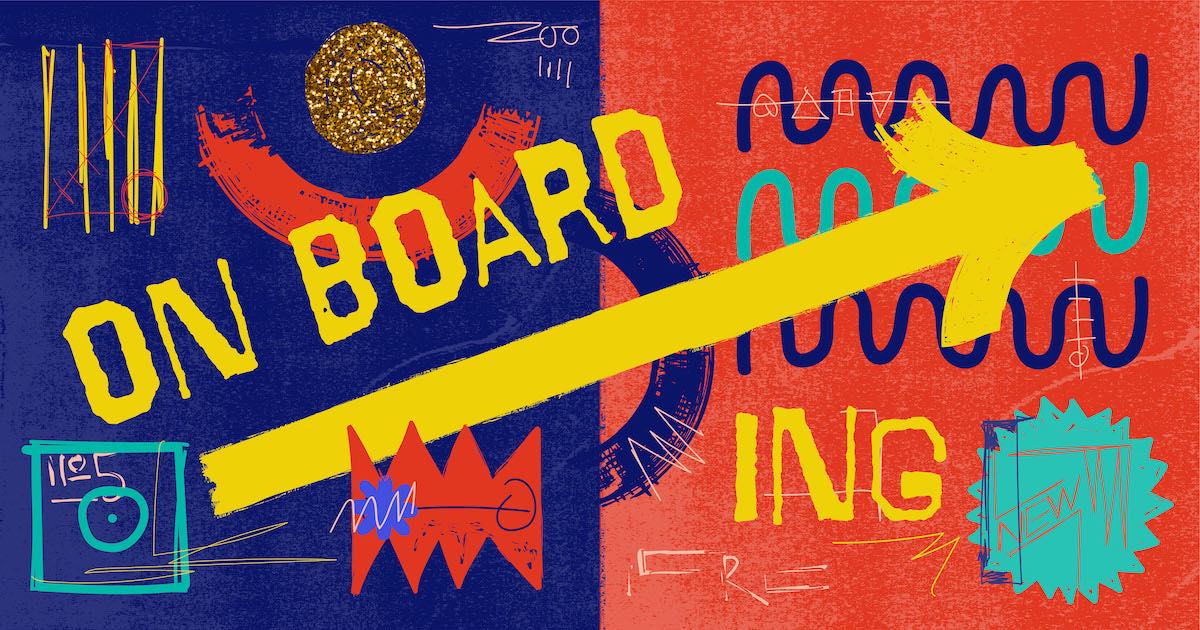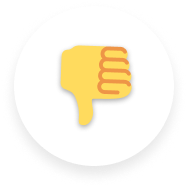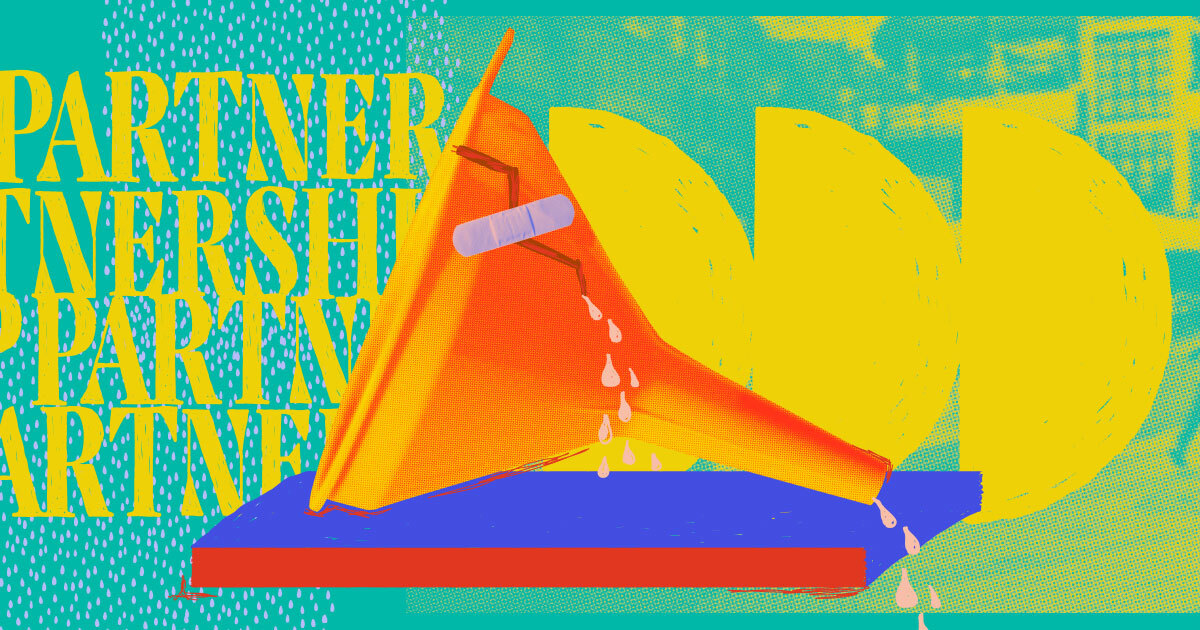partner onboarding is one of the most crucial steps in the partner journey. If you don’t do the work to help partners succeed from day one, they’re likely to never make a sale. That’s because while partners might be excited to join your program, most of them won’t be coming in equipped with the knowledge they need to actually start marketing and selling your product. But by regularly reaching out to partners right after they join your program, providing them resources that are actually useful, and giving them clear goals to work towards, you’ll greatly improve the odds of your new partners sticking around and growing into top performers.
This article will guide you through how to build partner onboarding that succeeds in:
- Welcoming partners to your program
- Providing actionable marketing materials
- Enriching partner product knowledge
- Helping partners meet clear goals
- Celebrating early successes
- Nudging inactive partners back on track
To illustrate firsthand what great partner onboarding looks like, we’re going to look at the recently revamped partner program from SaaS project management platform Teamwork, covering everything new partners receive within their first 30 days of signing up.
Nancy Mai Harnett, Teamwork’s Partner Marketing Specialist and the mastermind behind their new partner onboarding, told us: “Developing advertising and enablement resources to help our affiliates succeed was one of our main priorities this year. We wanted to ensure that partners were well equipped for every situation, from social to email, banners, or competitor write-ups. These things take time to build, but the investment is definitely worth it if the outcome is success for our partners.”
Let’s look at how they create that success.
What is partner onboarding?
When new users sign up for your product, you likely do some form of user onboarding, whether that’s through educational content, emails, in-app tutorials or support directly from your team. The goal of user onboarding is to help your customers see value in the product as soon as possible, so that they’re more likely to stay long-term customers (and drive long-term revenue).
Partner onboarding is the same thing, but for partners that have just joined your partner program. While new partners coming into your program might be somewhat familiar with your product and its audience, they’ll need your support to become real experts.
But it’s impossible to provide 1-on-1 onboarding to every partner as you scale your program up. That’s why effective partner onboarding uses automation to deliver resources to partners when they need it most, while also making it easy for partners to access resources on their own when they need to.
Welcoming partners to your program
Touching base with new partners as soon as they join your program helps keep their initial motivation going and drive them towards making their first referrals or sales. When welcoming partners into your program, you’ll want to:
Remind partners how rewards work. While you might include information about how much partners can earn on your partner program landing page, reiterating this information post-signup is a great way to keep partners motivated — especially if you have higher reward tiers they can work their way up to.
Introduce partners to their new partner portal. If you’re automating your partner onboarding, you’re ideally already using a partnerships platform that provides your partners with their own dedicated portal to log into when they want to access resources, and track their progress. Your first message to new partners is the ideal opportunity to introduce them to their partner portal and how it works.
Introduce yourself. While partner onboarding relies on automation to scale, that doesn’t mean your messages need to feel impersonal. You’ll want partners to know that they can reach out to you for help (and with a properly automated program, you’ll actually have time to answer them).
How Teamwork does it
Immediately after they join the program, new partners receive an email from Nancy, who manages the program and serves as partners’ main point of contact. The email reminds partners of commission rates, tells them how to start referring customers using their custom link, and gives them an introduction to their dedicated partner portal within PartnerStack.
Nancy’s email also links to resources hosted inside of PartnerStack that cover those topics in more detail. That also means that partners can access all of their resources inside PartnerStack whenever they need to.
Providing actionable marketing materials
The best way to ensure that partners stay active after signing up is to help them get their first sales as quickly as possible. You want new partners to say, “they’ve made it so ridiculously easy to start earning rewards, I’d be the biggest idiot ever if I didn’t!” (Or at least think it.)
That’s why you’ll want to arm your new partners with ready-to-use resources like:
- Content templates (emails, social media post, blog and video suggestions)
- Logos and creative assets for your brand
- Infographics, case studies and other data
How Teamwork does it
A day after welcoming partners to the program, Nancy from Teamwork follows up with an automated email showing partners some examples of content created by other successful Teamwork partners, and provides links to resources that make it easy for them to create content of their own.
Teamwork reminds partners they have access to assets like banners and email templates through PartnerStack’s resource center, making it easy for new partners to start making sales sooner than later.
Enriching partner product knowledge
While it’s important to provide partners with ready-to-use brand assets, partner enablement doesn’t stop there. You’ll want to educate partners into becoming real experts in your product, so that they can make the most of the materials you give them and grow into top performers.
Plus, it’s important to set the expectation of learning early in your program. Because you’re constantly developing your products and positioning, encouraging and rewarding continuous learning in your program ensures that partners stay well informed and adapt their strategies to align with yours.
How Teamwork does it
Three days after joining Teamwork’s program, new partners receive an email from Nancy that teaches them about some of Teamwork’s Ideal Customer Profile (ICP), and how customers within that audience are four times more likely to convert. This email both educates partners and makes it obvious to them why this information is beneficial.
Related: The partner program KPIs you should track and optimize.
Teamwork has many resources available to partners, including quick start guides for both affiliate and agency partners, each focusing on different levels of information appropriate for each type of partner. Teamwork partners can access these resources inside the PartnerStack partner portal whenever they need them.
Helping partners achieve clear goals
The most important thing you can do to get new partners to stick with your program is to help them earn money as soon as possible. The sooner you can deliver value to your partners, the more likely they are to make more sales in the future.
One way you can do that is to communicate clear and achievable goals early on in the partner journey, and provide incentives for meeting them.
How Teamwork does it
Five days after joining Teamwork’s partner program, partners receive an email from Nancy setting a clear goal with a bonus incentive for the first 5 trial signups they drive to Teamwork. Because these are trials instead of paid signups, the barrier to getting started earning through Teamwork’s program is relatively low, and creates opportunities for higher-value transactions in the future.
To apply the bonus rewards to partners, Teamwork uses the triggers feature of PartnerStack. Triggers are "if-this-then-that" style workflows that help automate your partner program, and works similarly to many marketing automation platforms you might have used already.
There are three components to building a trigger in PartnerStack:
- Events: The event that starts the trigger, e.g. a new customer or transaction being created. Teamwork’s trigger runs when a customer is created.
- Rules: Set specific criteria for the trigger, like which partner groups it applies to, or if it applies to only specific types of transactions. In Teamwork’s case, the rules are set to only apply the bonus to transactions created during a single month.
- Actions: The result of the trigger — in this case, generating an additional $10 reward for a partner when the customer account is first created.
When an Event occurs that meets the Rules, the Action happens.
Celebrating early successes
Once partners show signs of real activity — like when their custom referral links start getting traffic, or they refer someone that becomes a paying customer — you can keep the momentum going by letting them know you see their success, and that you’re there to help them continue growing their business.
How Teamwork does it
Teamwork sends three different emails to partners to celebrate partners’ early achievements:
- first ten clicks on their referral link
- first attributed user signup
- first attributed customer sale
These emails are all set up in PartnerStack to trigger automatically when partners reach each goal.
Related: Avoid the most common partner program launch mistakes.
Nudging inactive partners back on track
Even with the best partner onboarding possible, not every new partner is going to start making sales right away. But even partners that seem disengaged at the start can grow into top-performing partners if you help them get back on track. If you haven’t seen any activity from a new partner in the first few weeks, it’s worth reaching out to find out why.
How Teamwork does it
Teamwork sends two emails to partners who’ve shown no sales activity after signing up, the first after 14 days and the second after 30 days. These emails remind partners of the resources available to them and promote additional rewards partners can earn to incentivize partners getting started.
Building your partner onboarding flow
As the examples from Teamwork above highlight, the way you introduce resources to partners is just as important as the resources themselves.
It’s not enough to just send a welcome email to partners that lists out every single resource and reward available to them. You want to space out your onboarding emails so that they feel organic and give partners time to digest the information in each. Focus on leveling up partners’ knowledge and excitement from one message to the next, giving them clear goals to work towards and resources that support achieving them.
Below, we’ve mapped out how Teamwork spreads out their partner onboarding across the first 30 days to inspire your own partner onboarding flow:
Refine your program to perfection
While you want to get your partner onboarding right the first time, you’ll rarely get it perfect. That’s why it’s important to experiment with your partner onboarding, testing different resources, email copy and timing to see what works best.
One of the best ways to learn what partners need is to simply ask them. The partner onboarding we’ve looked at from Teamwork here was built around feedback from partners, and Nancy makes sure to mention frequently in every message that she’s there to help.
That’s one of the biggest benefits of automating your partner onboarding, after all — you’ll actually have the time to speak one-on-one with partners when it matters most.
More partner onboarding examples
Want some more partner onboarding success stories to learn from? Check these out:







.jpg)



